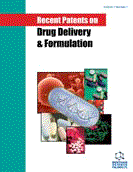Abstract
The article critically discusses parenteral delivery of self-assembled lipid or amphiphile nanoparticles, in the form of aggregated clusters or particles (capsules). The end-product or drug form is for application by administration of the medicine active in encapsulated form. This is used for site-specific cell manipulation and clinical therapy and introduces this directly to the body via the systemic route. The technology discussed represents a platform formulation that can be modified for a range of specific cellular targets. The components of the nanoparticle are assembled piece-by-piece and this provides an element of design flexibility, with the core particle being built-up in a succession of layers to ensure circulatory longevity and storage stability. This strategy excludes a more generalised delivery and widespread lack of active targeting and thus low dosage rather than avoidance of target, which is at best detrimental and at worst catastrophic in terms of non-targeted cell death. However, in some cases such as the AmBisome nanoparticle this drug delivery approach can work. This “better focussing” is achieved by a dual use of i) biocompatible particle coating chemistry and a ii) cell-ligand imprinted nanoparticle surface that furnishes the engineered nanoparticle with a recognition element to form a complex but more efficacious dispersible fusogenic pro-drug moiety. Non-targeted delivery of drugs such as those commonly forming the basis of transdermal delivery have been generically based on topical or adhesive patch-based delivery (emulsions) systems. This procedure even with recent advancements and patents is customarily inefficient in dosage and payload delivery, inconsistent in terms of product potency and inflexible to further modification or purpose-related enhancement. The assembly and delivery methodologies discussed here take the new experimental medicine and review them in a more focused and purposeful therapy-constructed manner. It is the use of a smart platform technology that is responsible for increased efficacy when applied to the disorder of interest.
Keywords: Parenteral drug, cell-targeting, encapsulation, iposomal and micellar systems, nano-medicine, platform technology, drug targeting, side-effects
 2
2














